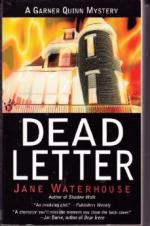|
This section contains 616 words (approx. 3 pages at 300 words per page) |

|
Waterhouse employs a number of literary techniques including flashbacks, foreshadowing, imagery, interior monologue, verbal irony, situational irony, inferred motivation, first person point of view, regionalism, and suspense.
The novel opens with a flashback to Quinn's childhood where she introduces Cilda Fields as her mothering caretaker.
She also recalls her mother during her trip to Tiffany's for Corbin's book signing.
Waterhouse uses these techniques throughout the book to provide the readers with necessary and appropriate information.
Foreshadowing helps keep the readers in suspense throughout the novel. Readers are constantly reminded of Quinn's longing for Blackmoor—such as the picture on her night stand and her reaction to Blackmoor's endorsement of Corbin's book.
These reminders prepare readers for the resolution where Blackmoor and Quinn reunite at her father's estate.
Waterhouse uses the senses of sight, smell, hearing, and touch in her imagery. Her effective techniques draw readers...
|
This section contains 616 words (approx. 3 pages at 300 words per page) |

|




